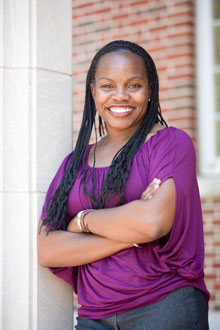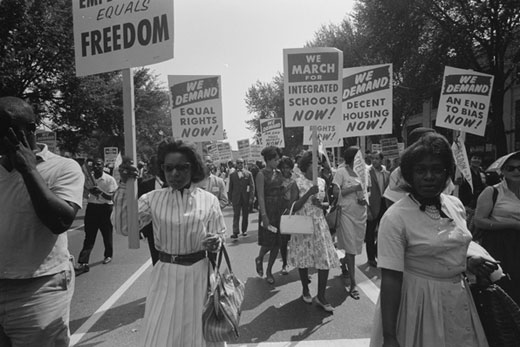Doctoral candidate AnneMarie Mingo's short documentary film drawing on the words of women involved in the civil rights movement from churches in Atlanta and Harlem will be shown Friday, March 30, at 7 p.m. at the Auburn Avenue Research Library on African American Culture and History.
The screening of "Hearing Herstory: Black Churchwomen's Liberative Social Ethics in the Civil Rights Movement," in collaboration with the Emory College Center for Creativity & Arts, is part of Women's History Month.
Mingo, a student in Emory's Graduate Division of Religion, discusses the inspiration and work behind the oral history project:
A multimedia project is not the usual dissertation. What was the inspiration behind your project?
My dissertation brings the voices of everyday black women who were a part of the civil rights movement to the center of the stories that so often focus on black male preachers, such as Martin Luther King Jr. While we now know about some of the women who were in various leadership positions within the civil rights movement, very little if anything is known about the women who helped make up the masses of protesters who gave the movement life. As a social ethicist and oral historian, it was important for me to not only collect the stories for my research, but to capture the images of the women who embodied virtues of faith, courage, freedom and hope for future generations to learn from. These women have been deemed invisible to the civil rights narrative in the past, but through my work I am helping to make their experiences visible and central to our understanding of that critical moment of our collective history. Because of the age of many of the women, I realized that I might only have one opportunity to capture their stories, so I used a small digital audio recorder and digital camera to capture both an audio and visual record of their memories. The multimedia elements of my work comprise a small portion of what will be included within my written dissertation.
Why did you emphasize women in churches? What kind of role did the church play in the civil rights movement?

AnneMarie Mingo's film draws on the oral histories of women who played a pivotal role in the Civil Rights movement. Photo by Allison Sherriffs.
The black church played a central role in the organization of the civil rights movement, and historically black women have comprised nearly 80 percent of the black church's membership. Many veterans of the movement today acknowledge the critical role that women and young people played in the development and sustainment of the most impactful campaigns during that era. My work begins to outline the ways that the women's beliefs in a God of love and justice influenced their actions as they faced injustices on a daily basis.
Based on the interviews in Atlanta and Harlem, what were the differences between the civil rights work in the South versus the North?
The civil rights movement in the North is a part of American history that is largely unknown. Although many of the areas in the North did not have the Jim Crow signs and other markers that distinguished the segregated South, segregation existed in the North. The challenges in the North were often not in the areas of voting, which dominated the South, but often took the form of access to equal housing through tenant struggles, and access to equal jobs through labor struggles. In addition, a few of the women in my study who have lived in the North for the last 30 or more years, were raised in the South and participated in the movement there, and vice versa. The churches that I worked with to identify the women are in the areas where the women currently live; not necessarily where they were active during the movement.
With all these amazing stories and contributions made by these women, what message stood out to you?
The stories of their courage and hope are inspiring and compelling as we continue to face issues of injustice today. One of the things that almost every woman said was that she felt that being active in the civil rights movement was something that she simply had to do. The women often expressed a belief that what they were doing was greater than themselves. They took the risks that they did to make things better for future generations. We have the luxury of looking back on their actions and seeing the results, but they made the commitment to fight for change despite personal risks, even when they were not sure how things would turn out. The challenge for each of us today is to ask ourselves what are we willing to commit to in order to make things better for those who will come after us.
How did the Center for Creativity & Arts grant enable you to complete this project?
The grant from the Center for Creativity & Arts enabled me to work with an editor to craft a manageable story from over a hundred hours of interviews that I conducted. The grant also enabled me to obtain images and music that support the stories that the women have shared, and ultimately help to strengthen my film "Hearing Herstory."

